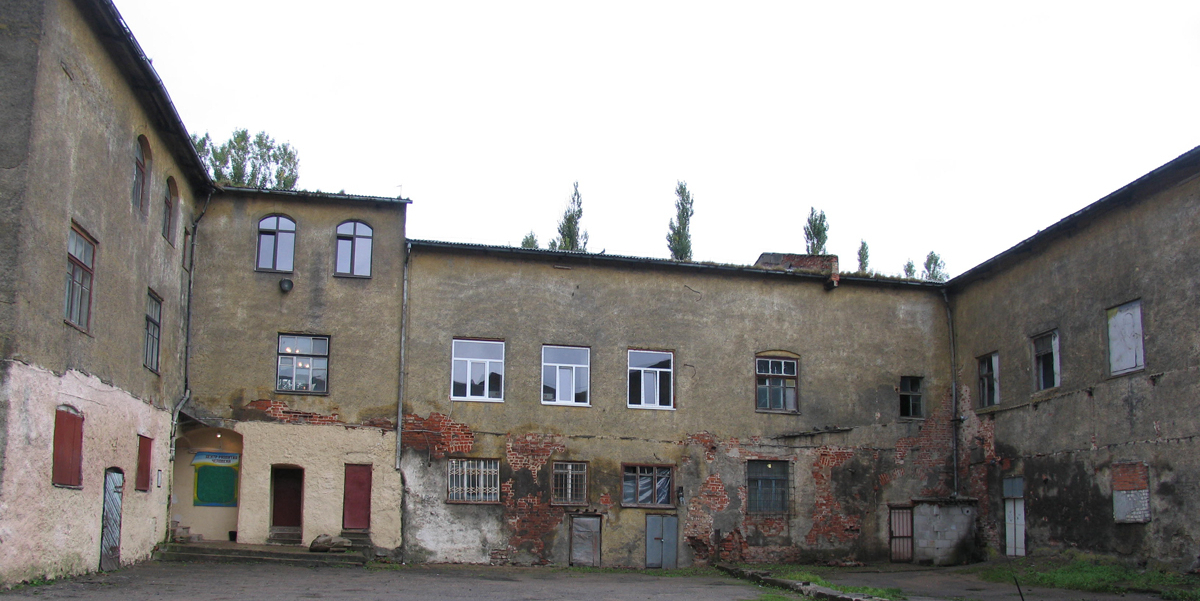Labiau Castle in Polessk
(54.862136, 21.110820)
The name is first mentioned in a charter of 1258 about the division of Sambia between the Order and the bishop. The name most likely originates from the toponym of the river Laba (present-day Dime). The foundation of the castle, on the site of an earlier Prussian settlement, is dated to the 70s of the 13th century, at the end of the Second Prussian Uprising. Originally, the castle was a wooden fortification on the ground, which covered the waterway of the Laba River and the Kurisches Haff Bay to Memel. The river then fed into the gulf. In 1277, the fortified settlement of Raganita was seized. The local population responded by burning Labiau, which was later rebuilt. After Ragnit Castle was founded in 1289, Labiau became part of the commandery.
In 1347, detachments of Lithuanian princes Olgerd and Keistut invaded eastern Sambia, sacking the environs of Labiau without touching the Order’s castle. A retaliatory campaign of the Order to Lithuania in 1352 soon followed, it was unsuccessful, but was followed by a counter-attack of Olgerd and Keistut, who sacked not only the surroundings of Labiau, but also Shaaken, Povunden and Kaymen. The castle was strengthened by hedges, but such activity of Lithuanian princes made it necessary to fortify it even more. The construction of a stone castle started in 1360. This was caused by worsening relations with the Lithuanians from the middle of the 14th century, for example, repeated campaigns of Olgerd and Keistut to Sambia.
Understanding the importance of the use of rivers for transport and strategic purposes, the Order began to build waterworks on the Labe River in 1372. Its connection with the Memel River proved unsuccessful, but its course was widened and the river was connected to the Pregolje (present-day Pregol) at Tapiru. Further works, in the period of 1395–1410, resulted in a canal, and in 1430 a lock was built at Labiau.
During the Thirteenth Year’s War of the Teutonic Order with the Union of Prussia in 1454, the castle was besieged, but was not taken. In 1519, the castle was the venue of a meeting of Vasili III’s ambassadors with Grand Master Albrecht of Brandenburg. Following the secularization of the order’s lands in 1526, Labiau was given to Dorothea of Denmark as a wedding feast. After Dorothea’s death, the castle passed to Anna Maria von Braunschweig-Lüneburg, Duke Albrecht’s second wife.
The castle continued to play an important role later, in the 17th century. For instance, it was the castle where Charles X and Friedrich Wilhelm signed an agreement on an alliance against Poland on 20 November 1656.
In the second half of the 20th century, the castle was used as a prison. After 1945, this function was retained until a fire in 1963. Consequently, the castle was handed over to the Kaliningrad branch of the Leningrad Agricultural Institute for use as a lecture room, laboratory and dormitory, but due to lack of funds the institution soon. Between 1964 and 1965, several rooms were vacated. The castle was deteriorating, which was exacerbated by the transfer of its grounds to the Yantar factory. Many parts of the castle were destroyed. In the 1990s, following the bankruptcy of the factory, parts of the castle were transferred to various institutions.
D. I. Veber
Tags: castles and fortresses, 13 century, Teutonic Order (Prussia), The ways of the Teutonic knights: Prussia in the 13th century, Teutonic knights

 English (United Kingdom)
English (United Kingdom)  Russian (Russia)
Russian (Russia) 



























